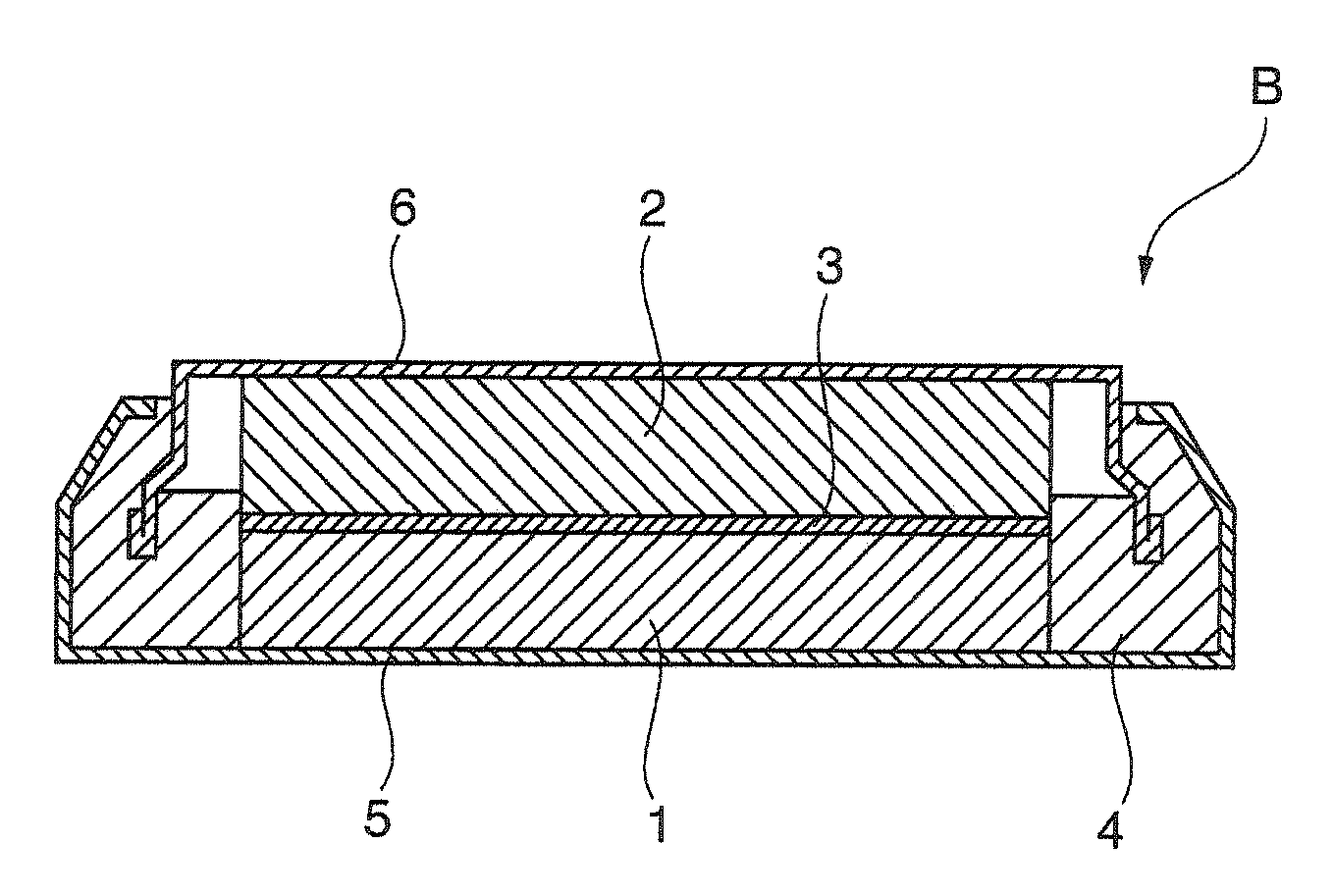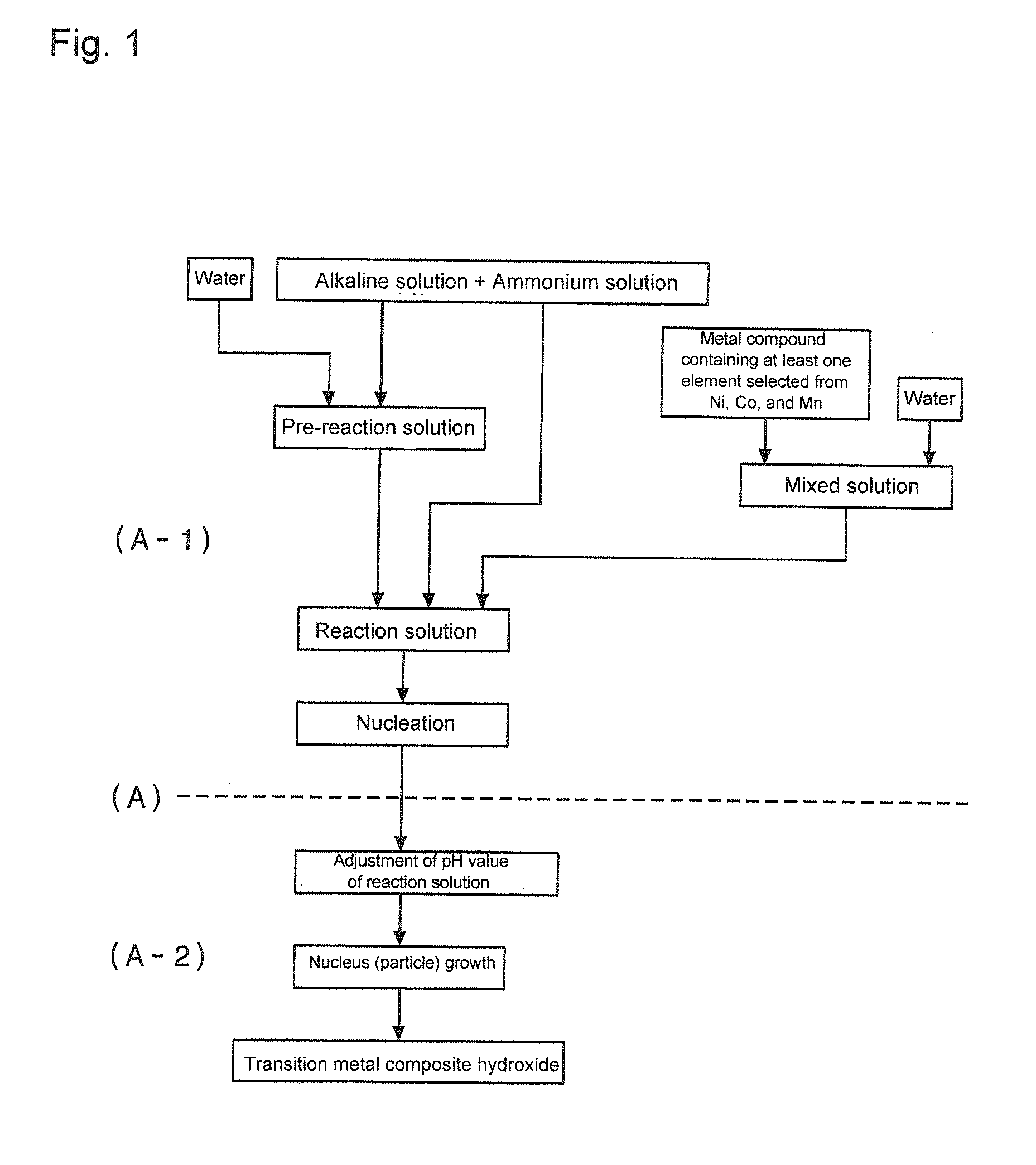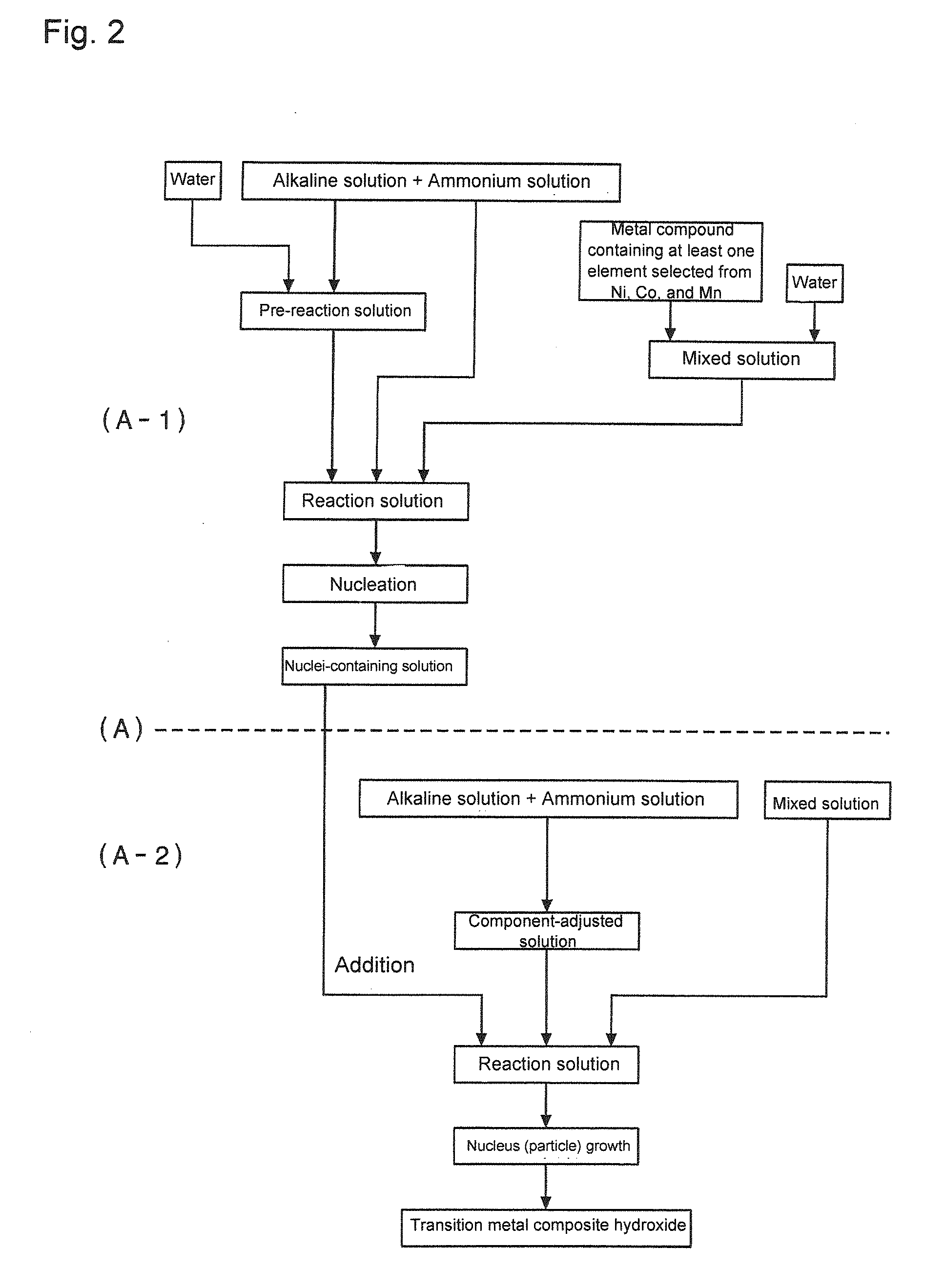Transition metal composite hydroxide capable of serving as precursor of positive electrode active material for nonaqueous electrolyte secondary batteries, method for producing same, positive electrode active material for nonaqueous electrolyte secondary batteries, method for producing positive electrode active material, and nonaqueous electrolyte secondary battery using positive electrode active material
a technology of transition metal and composite hydroxide, which is applied in the direction of batteries, nickel compounds, sustainable manufacturing/processing, etc., can solve the problems of easy cycle deterioration, inability to achieve the improvement of positive electrode material performance, and difficulty in obtaining lithium ion nonaqueous electrolyte secondary batteries having sufficiently high performance, etc., to achieve excellent battery characteristics, high production efficiency, and high production efficiency
- Summary
- Abstract
- Description
- Claims
- Application Information
AI Technical Summary
Benefits of technology
Problems solved by technology
Method used
Image
Examples
example 1
Composite Hydroxide Particle Production Step
[0357]First, while a reaction vessel (34 L) was filled half full with water and stirred, a temperature in the vessel was set to 40 degrees C., and nitrogen gas was circulated through the reaction vessel to create a nitrogen gas atmosphere. An oxygen concentration in a space inside the reaction vessel at this time was 2.0% by volume, and a concentration of oxygen dissolved in a solution in the reaction vessel was not more than 2 mg / L.
[0358]To the water in the reaction vessel, 25% by mass of a sodium hydroxide solution and 25% by mass of aqueous ammonia were added in proper amount to adjust a pH to 12.6 at a reference solution temperature of 25 degrees C. Furthermore, an ammonium ion concentration in a reaction solution was adjusted to 15 g / L.
[0359]
[0360]Next, nickel sulfate and cobalt sulfate were dissolved in water to obtain 1.8 mol / L of a mixed solution. This mixed solution was adjusted as to have a molar ratio of metal elements of Ni:Co ...
example 2
[0378]A positive electrode active material for nonaqueous electrolyte secondary batteries was obtained and evaluated in the same manner as in Example 1, except that, in the composite hydroxide particle production step, a mixed solution was prepared so as to have a molar ratio of metal elements of Ni:Co:Ti of 82:15:1 and crystallized, and coating was performed so as to achieve a molar ratio of Ni:Co:Ti:Al:W of 82:15:1:2:0.5.
[0379]The positive electrode active material had a composition of Li1.02Ni0.816Cu0.149Ti0.010Al0.020W0.005O2.
[0380]Specific surface areas of the composite hydroxide and the positive electrode active material were measured by BET method, and were 8.9 m2 / g and 0.72 m2 / g, respectively.
[0381]Table 1 shows average particle diameters, [(d90−d10) / average-particle-diameter] values, positive electrode resistance, and thermal stability of the obtained composite hydroxide and the obtained positive electrode active material for nonaqueous electrolyte secondary batteries.
example 3
[0382]A positive electrode active material for nonaqueous electrolyte secondary batteries was obtained and evaluated in the same manner as in Example 1, except that, in the composite hydroxide particle production step, a mixed solution was prepared so as to have a molar ratio of metal elements of Ni:Co:Zr of 82:15:0.5 and crystallized, and coating was performed so as to achieve a molar ratio of Ni:Co:Zr:Al:W of 82:15:0.5:2:0.5.
[0383]The positive electrode active material had a composition of Li1.02Ni0.82Co0.15Al0.02Zr0.005W0.005O2.
[0384]Specific surface areas of the composite hydroxide and the positive electrode active material were measured by BET method, and were 9.0 m2 / g and 0.77 m2 / g, respectively.
[0385]Table 1 shows average particle diameters, [(d90−d10) / average-particle-diameter] values, positive electrode resistance, and thermal stability of the obtained composite hydroxide and the obtained positive electrode active material for nonaqueous electrolyte secondary batteries.
PUM
| Property | Measurement | Unit |
|---|---|---|
| pH | aaaaa | aaaaa |
| pH | aaaaa | aaaaa |
| pH | aaaaa | aaaaa |
Abstract
Description
Claims
Application Information
 Login to View More
Login to View More - R&D
- Intellectual Property
- Life Sciences
- Materials
- Tech Scout
- Unparalleled Data Quality
- Higher Quality Content
- 60% Fewer Hallucinations
Browse by: Latest US Patents, China's latest patents, Technical Efficacy Thesaurus, Application Domain, Technology Topic, Popular Technical Reports.
© 2025 PatSnap. All rights reserved.Legal|Privacy policy|Modern Slavery Act Transparency Statement|Sitemap|About US| Contact US: help@patsnap.com



